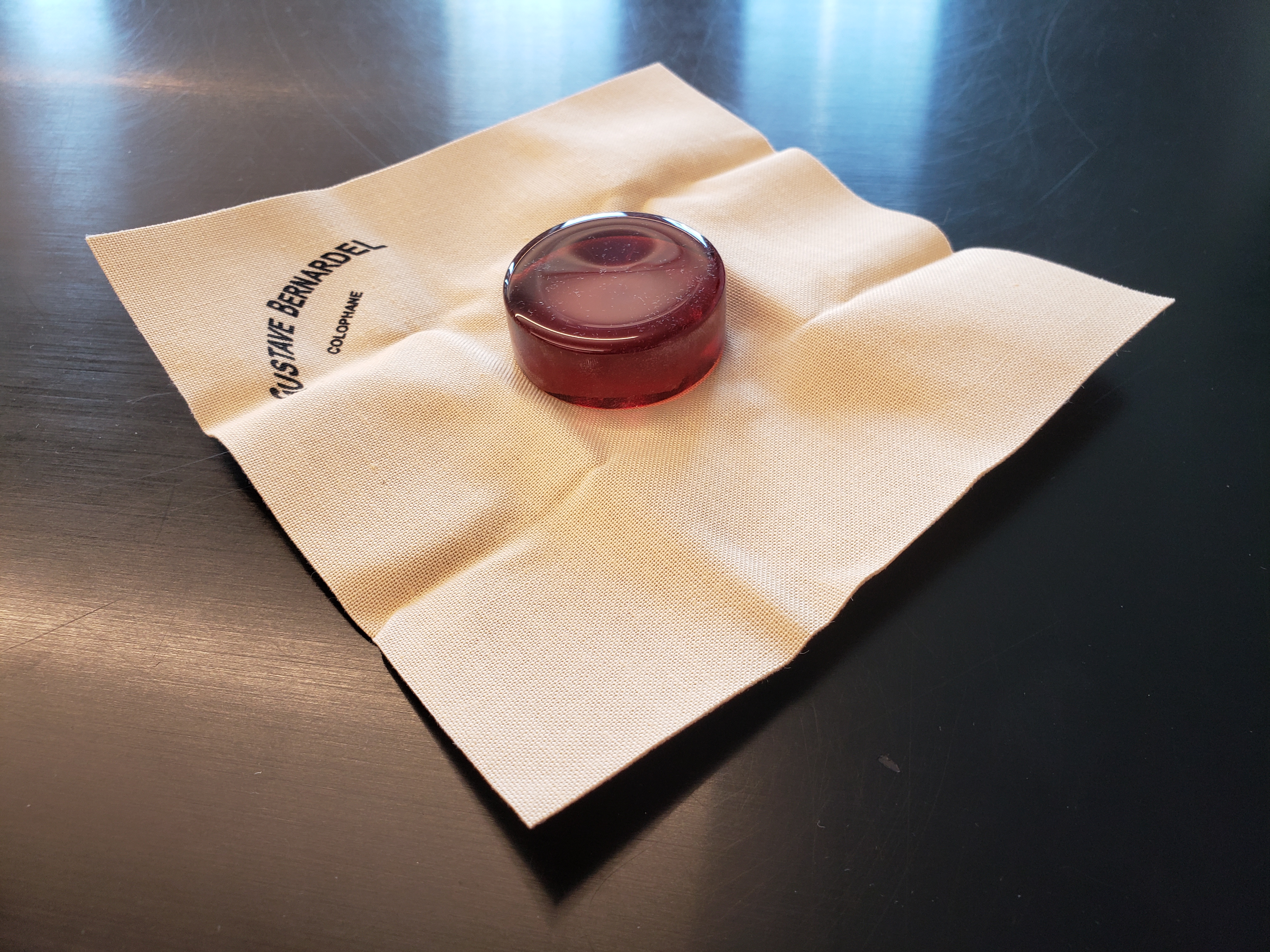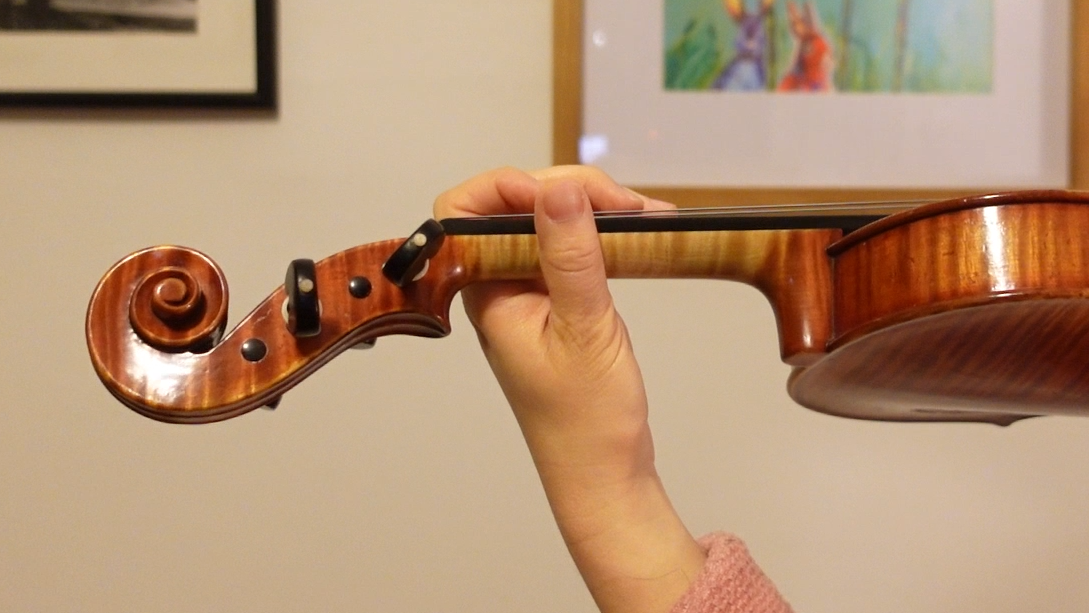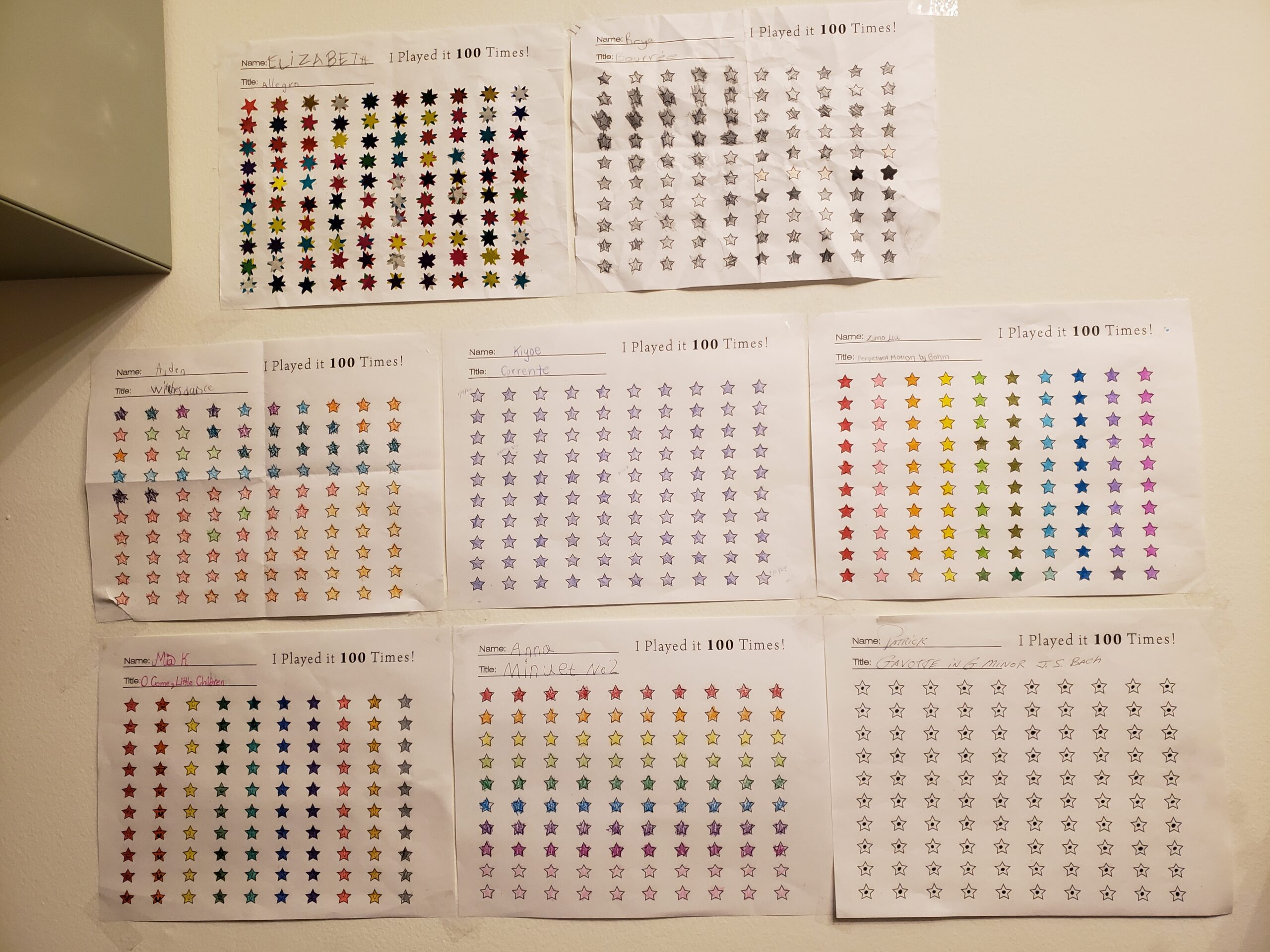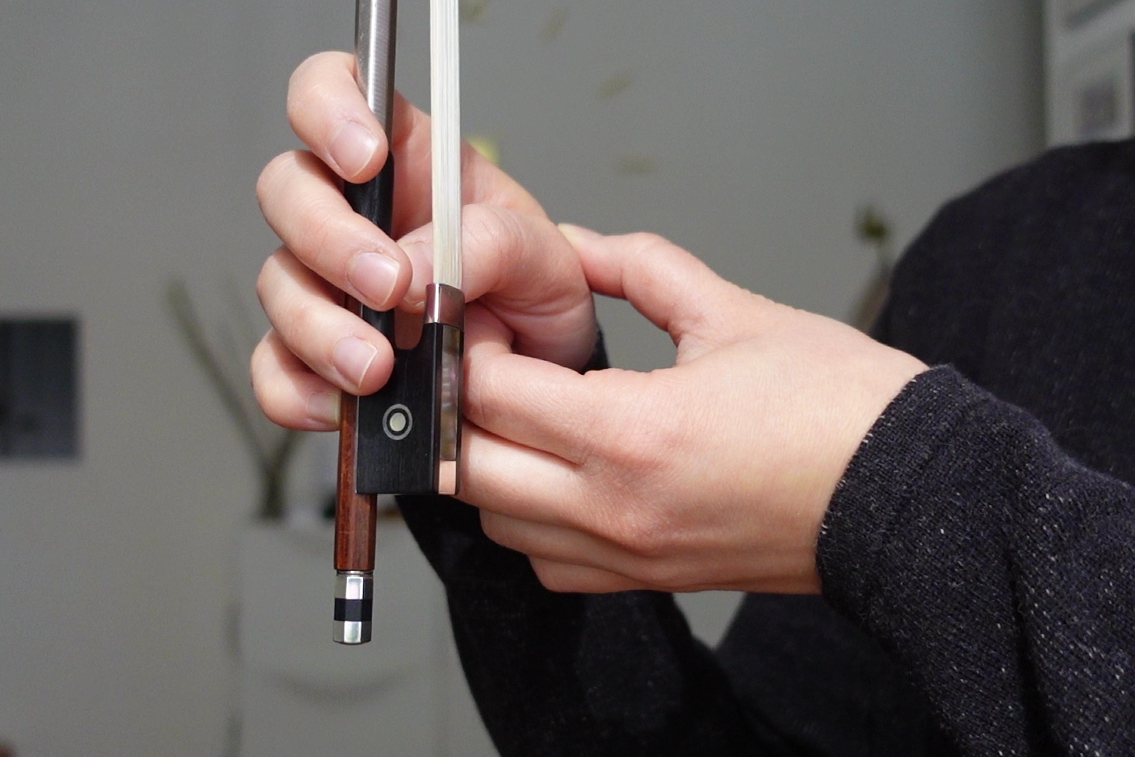Whether you are taking music lessons remotely or in person, there are some pieces of equipment that can help you set up for success. Some of these recommendations apply to all music students no matter their instrument. Others are more specific to violin students. I hope that these recommendations will allow you to prepare for your exciting musical journey.
This post may contain affiliate links for products that I feel comfortable recommending. When you buy through links on this site, I may earn a small affiliate commission at no extra cost to you.
The Music Student Basics
Music Stand
If you are reading from sheet music, a music stand will make the experience more comfortable. A music stand will prevent strain in your neck and back by holding the music at the proper height. There are many types of stands to choose from, such as wire stands, portable solid stands, and professional orchestra-style stands. Consider if you will need to put away your stand between practice sessions or travel with it. In those cases, you may want a lightweight stand that can fold up. Conversly, if you will primarily be playing violin at home and have no need to hide the music stand away, a solid-back stand will prove the most comfortable and stable experience. I have personally found that my Peak folding stand strikes the balance between being lightweight, portable, yet solid and stable.
Stand Light
A stand light attaches to the top of the music stand and shines directly onto the music. I use a stand light when practicing in the evening, and I bring it with me when performing in poorly lit concert venues. I have been using an Aria stand light, which I love because it fully lights up the entire surface of my music. Furthermore, the LED lights are long lasting and easily rechargeable. Keep in mind, this type of stand light will only work with a solid-back music stand. If you have a wire stand, you will need a smaller and more lightweight light, such as this clip-on LED book light.
Home Practice Tools
Metronome/Tuner
A metronome/tuner is an essential practice device for any musician. A metronome helps you keep a steady beat when practicing. A tuner helps you tune your instrument and play in tune. The two functions are usually built into the same device. There are many metronome/tuner apps available to download on your smartphone. On the other hand, you can also buy a battery-powered metronome/tuner if you prefer to not be distracted by your phone while you practice. For years, I have been using a Korg metronome/tuner similar to this one. As an added bonus, using a separate device for my metronome allows me to turn off my phone and stay in the zone while practicing.
Music Books/Sheet Music
If your teacher has you reading from music, it is important that you have your own books or copies. This way you can practice between lessons and make markings in your parts. Do not ask your teacher to photocopy music for you, because in most cases this is illegal due to copyright laws.
Pencil
There is a universal rule for musicians: Always use pencil- never use pen on your sheet music. Generally speaking, you will need to erase or change markings in the future. Therefore, keep a few pencils in your case so that you are never caught without one.
Equipement For Remote Lessons
USB Microphone
If you’re taking virtual lessons, you may want to consider investing in a USB microphone to improve the quality of sound that your teacher will be hearing. Your teacher will be able to help you better if they are hearing the most accurate sound. It can be frustrating to experience interruptions to your lessons due to poor sound quality. A simple USB desktop microphone such as the Shure MV5 or the Blue Yeti can help eliminate those issues. These types of microphones will set you back about $100, but it’s definitely worth the investment.
Finding the Right Instrument
Violin and Bow
Many beginner students are unsure how to acquire their first instrument. Whether you rent or buy, I strongly recommend picking your violin and bow from a reputable violin shop rather than purchasing a cheap instrument online. The last thing you want is for your progress to be held back by the limitations of a malfunctioning violin or bow. Your teacher may be able to suggest local shops where you can rent or buy a good quality student-level instrument. You will also need a violin case to protect your delicate instrument, even if you only plan to play at home.
Equipment for Violinists
These are the violinist-specific items that can be easily stored and carried in your violin case.
Shoulder Rest/Pad
There are many items violinists can use to support the violin on their shoulder, including sponges, cloths, rubber mats, air-filled pouches, and shoulder rests. It all comes down to body type and personal comfort. Your teacher should be able to help you try different options and pick the one best suited for you. It can take years of experimentation and adjusting to find the right set-up for your personal violin practice. To that end, don’t be afraid to try several different set-ups until you find the one that gives you the most comfortable playing experience.

Rosin
Rosin is a sticky substance made from tree resin. It is applied to the bow hairs to create friction with the violin strings. Without rosin, the bow will not make a sound. Speak to your teacher about what brand of rosin they use, as rosins range in price and quality and can affect the tone and feel of your bow hair. Personally, I have been using Bernardel rosin for the past decade. However, if you are a beginner student, a less expensive student-level rosin may suffice.
Violin Maintenance
Cleaning Cloth
After playing violin, you will notice that rosin has rubbed off the bow and onto the violin. If left untouched, this dust will eventually turn into a hard, opaque layer. The best thing you can do for the care of your violin is to wipe up the rosin dust after each practice session. Use a thin, soft cloth and make sure you wipe up all the rosin from the strings, fingerboard, and body of the violin.
Extra Strings
In case you have a string break on accident, it is a good idea to have an extra set of strings on hand. Ask your teacher for their recommendation of which brand of strings they prefer. Each brand of violin strings has its own timbre and tone quality. I usually recommend that my students string their violins with this set of Dominant Strings with a Pirastro Gold E, as it is a warm sounding, inexpensive set that works on most violins. On the other hand, based on the brightness of your violin and your preferred tone quality, it may be worth it to experiment with other string brands. Again, ask your violin teacher for their guidance and recommendations.
Practice Without Noise Complaints
Practice Mute
If you have roommates, family members, or neighbors who are sensitive to noise, a practice mute can keep everyone happy while you are practicing. The practice mute sits on the bridge of the violin and dampens the sound of the violin considerably. Practice mutes come in several styles, most commonly metal practice mutes and rubber practice mutes. Metal practice mutes may be more effective in dampening sound, but need to be used carefully in order to avoid damaging the delicate bridge of the violin. I personally have a metal practice mute that has come in handy when needing to practice in noise-sensitive spaces or late at night.
Work With Your Instructor
Is it overwhelming to consider all of the products required to set up for a sucessful music lesson? Trust me, I get it! Many of my preferences for musical equipment has come from years and years of experimentation, recommendations from colleagues and teachers, and trial and error. By the same token, your teacher will be your best source for guidance on musical equipment. They can give you recommendations based on your skill level and specific needs.
Alternatively, if you do not currently have a violin teacher, feel free to reach out to me. I’m happy to set up a consultation to advise you on how to get properly set up for the most sucessful violin lessons.
Interested In Adult Beginner Violin Lessons?
Online Lessons Available
How To Overcome Left-hand Pain While Playing Violin
Left-hand and arm pain while playing violin is a common challenge for students. As a violin teacher,…
Surprising Takeaways From The 100 Star Practice Challenge
At the beginning of 2024, I had an idea to motivate my students back into practicing. Most of my stu…
5 New Strategies For Violin Neck and Shoulder Pain
I have previously written articles about ways to relieve shoulder pain caused by playing the violin,…
How To Overcome Not Feeling Motivated To Practice
Are you motivated to practice violin every day? I’m going to guess not, and that’s becau…
7 Ways To Improve Tone Quality For Beginner Violinists
As a violin teacher, one of my top priorities is that my beginner students learn to produce a resona…




